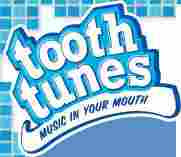Friday, January 9, 2009
The different forms of dental bleaching
Whitening toothpastes:
These are over-the-counter preparations that have a low concentration of carbamide peroxide. These toothpastes will work to brighten your teeth if you are a very good brusher, brush many times a day, and have a lot of patience. In the years since these toothpastes have been on the market, I have seen only one person who achieved real results using whitening toothpaste only. They are very useful, however in maintaining the whitening achieved by using trays and strips.
Bleach releasing disposable strips (Crest Strips):
These are strips of plastic designed so that they will adhere to the teeth. They are applied and worn for several hours like the trays described above. The carbamide concentration in home bleaching strips is only 7% to 14% while professionally prescribed take-home bleaches come in either 22% or 32%. Thus it takes a lot longer to get the same results using over the counter bleaching strips than it does using professionally prescribed bleaching solutions in trays. The main advantages to the strips is that no impressions need to be taken to make trays, and the strips do not apply pressure to the teeth which may increase the sensitivity of the bleaching process. A number of my patients have tried them. Some have had good results. Others have had little or no improvement. The major problems I have heard about with the strips is that they do not adhere very well to lower teeth, and they are too short to bleach all the upper teeth that show when the patient smiles.
Professionally supervised take-home bleaching with custom made trays:
This type of system is available only through your dentist. The bleaching material can only be bought with a prescription and must be applied using the custom trays that the dentist or his hygienist makes for you. The agent is carbamide peroxide and it comes in concentrations between 10% to 35% with 15% being the most popular for professional take-home bleaching. Because of the high concentration of the agent, and the close approximation with the teeth made possible by the trays, this system produces very good results in anywhere from several hours to several weeks of regular use. A drop of agent is placed in each tooth indent and the trays are placed in the mouth for 30 minutes to an hour maximum. The carbamide peroxide penetrates the enamel into the dentin and effectively bleaches the teeth.
Post-bleaching tooth sensitivity is a frequent complaint, but it is transient and generally lasts no more than 24 hours. The use of high fluoride concentration toothpaste (5000 ppm) such as that found in the prescription toothpaste PreviDent used prior to, and throughout bleaching effectively reduces the sensitivity. Alternatively, the use of a 5000 ppm fluoride gel for 5 minutes in the bleaching trays after each bleaching session can also reduced sensitivity. The patient can also use amorphous calcium phosphate products (MI paste by GC America) either in the trays for 3 minutes, or as a dentifrice twice daily.
Professionally supervised at-home treatment has the highest dentist satisfaction rate of all bleaching methods offered with 94% being either very satisfied or satisfied with the results.
from: www.doctorspiller.com

No comments:
Post a Comment